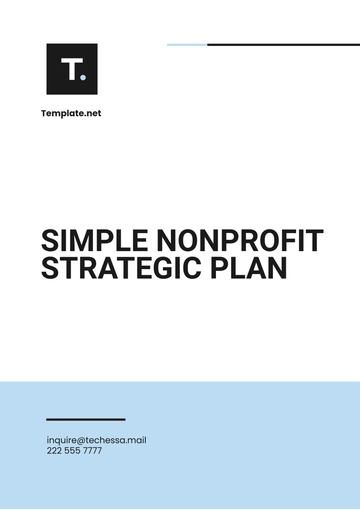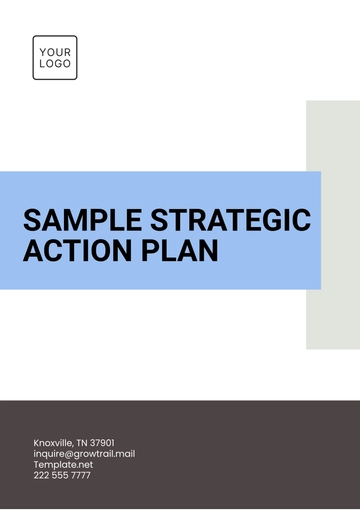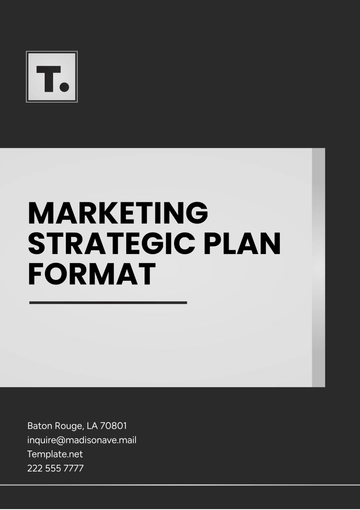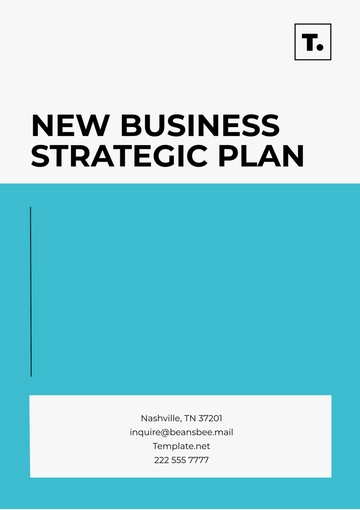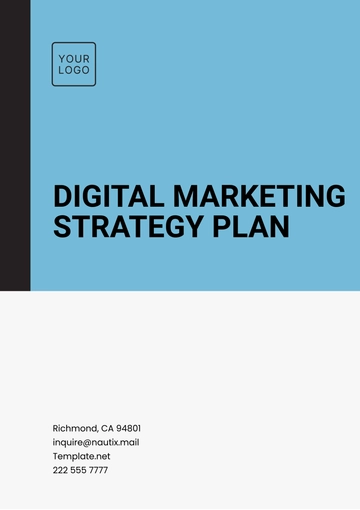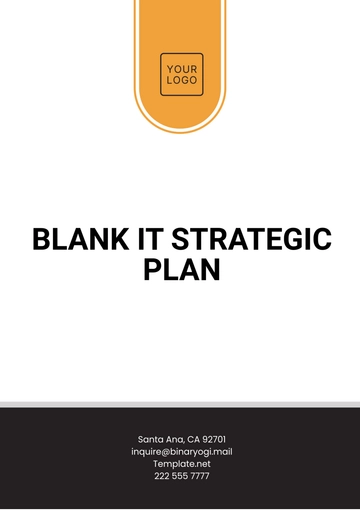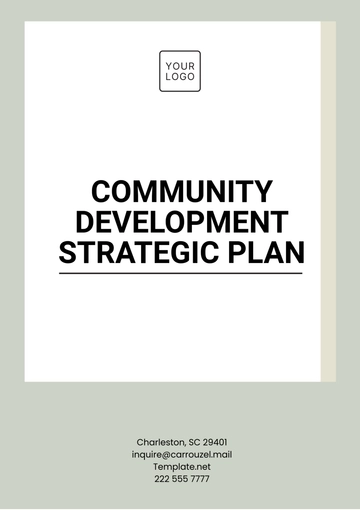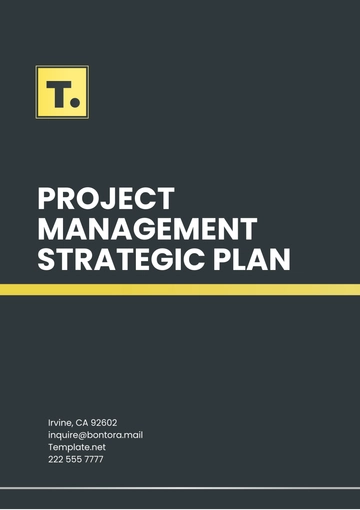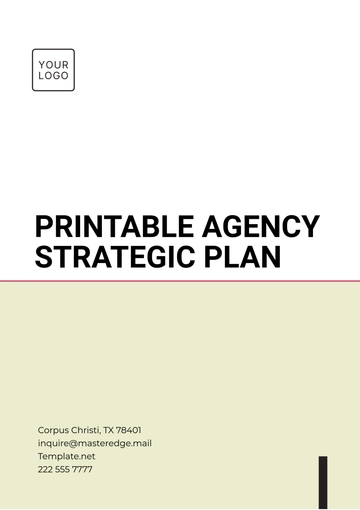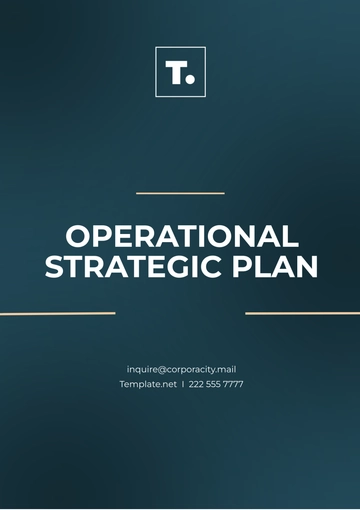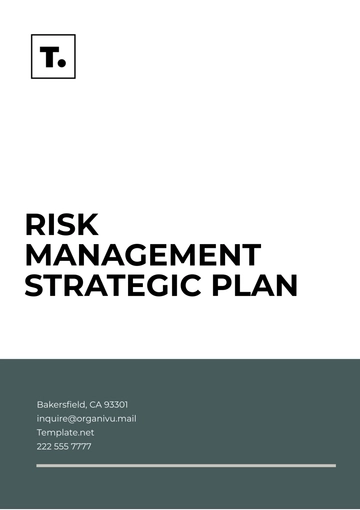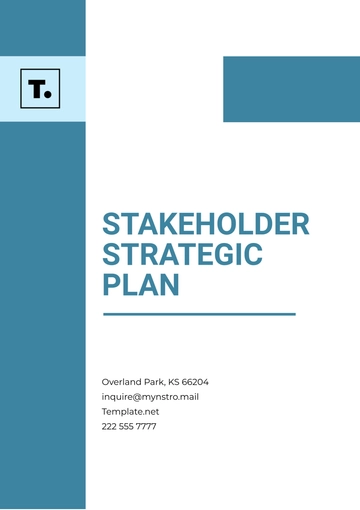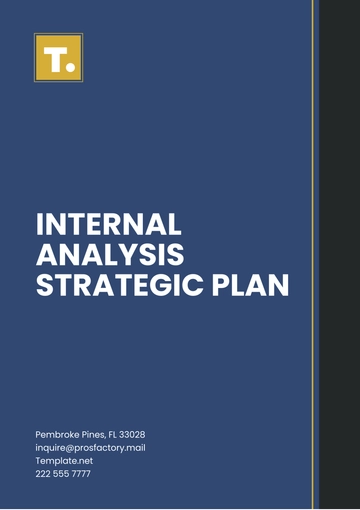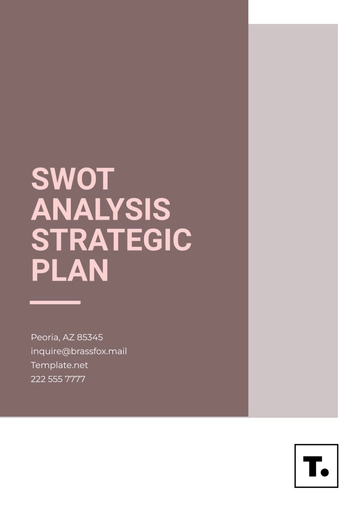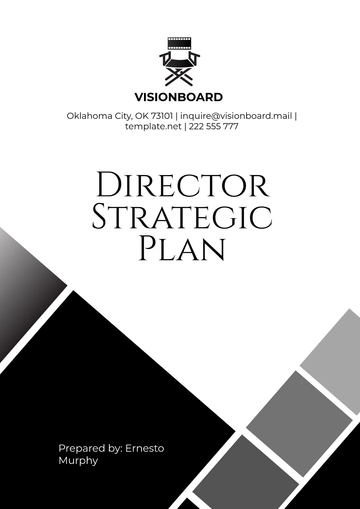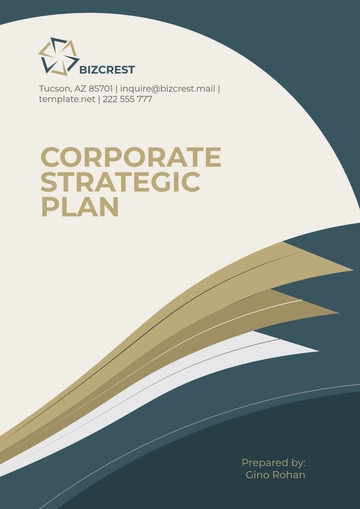Free Accounting Strategic Planning Document
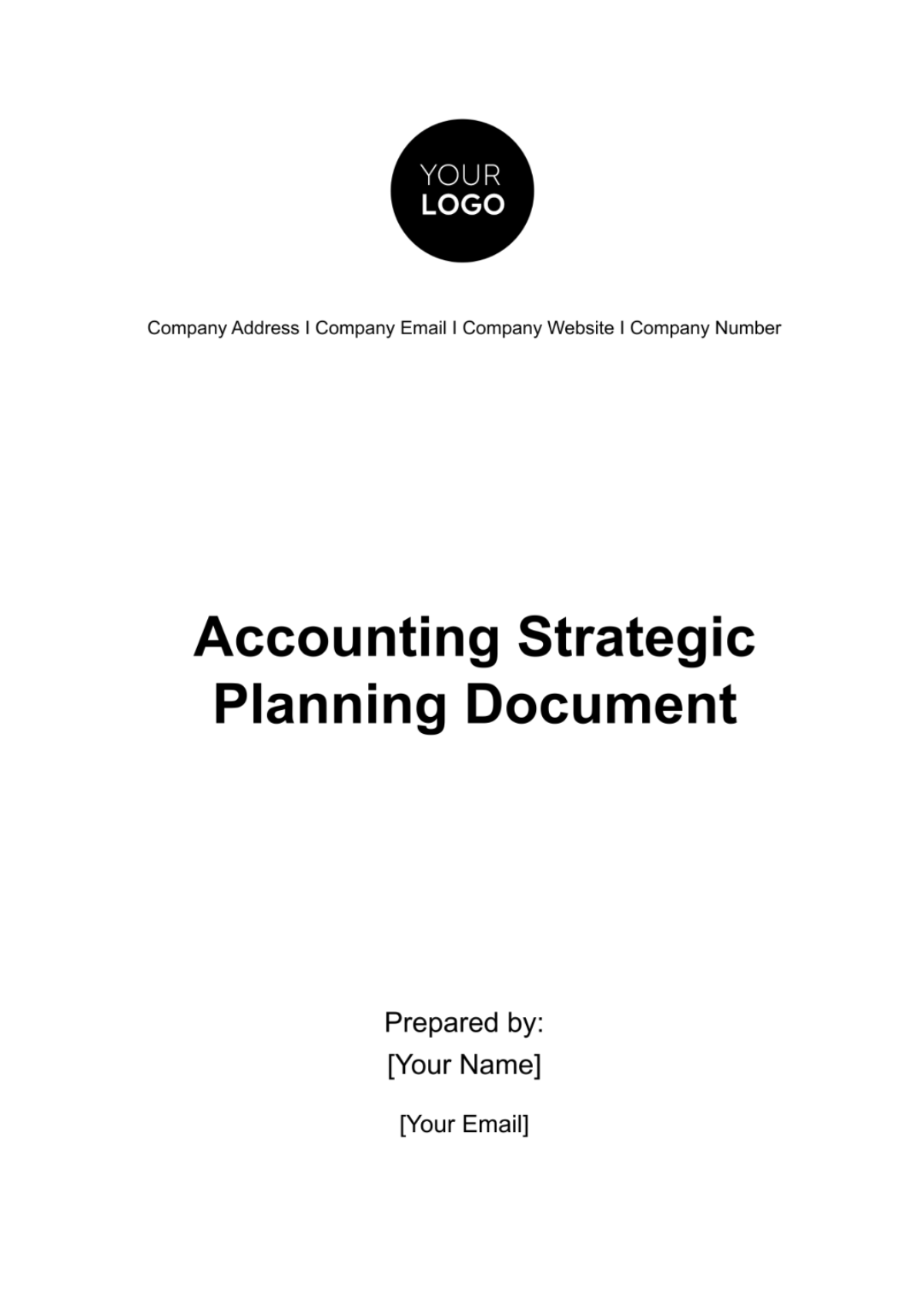
TABLE OF CONTENTS
Executive Summary...................................................................................................3
Mission and Vision.....................................................................................................4
Objectives...................................................................................................................5
Situational Analysis....................................................................................................6
Strategy Formulation..................................................................................................7
Action Plan..................................................................................................................8
Performance Metrics..................................................................................................9
Risk Management........................................................................................................10
Commitment to Compliance.......................................................................................11
Continual Improvement...............................................................................................12
Executive Summary
The Accounting Strategic Plan presents a framework for the future trajectory of our accounting department. It delineates a series of both immediate and extended objectives, accompanied by well-defined strategies for their realization. This document is poised to be the foundation for our department's success in the ensuing years, fostering robust financial stability and strategic expansion across our business.
Mission and Vision
Our Accounting Department is committed to unwavering adherence to all financial regulations and standards, ensuring transparency and fiscal prudence. The vision guiding our endeavors is to transform into a financially adept entity, propelling sustainable growth and creating exceptional value for every stakeholder involved.
Objectives
The foremost objective of this strategic plan is to significantly enhance the efficiency and efficacy of our accounting operations. This encompasses a multifaceted approach, aiming at several key areas:
Financial Reporting Enhancement: Elevating our financial reporting capabilities to ensure greater accuracy, timeliness, and comprehensiveness in financial disclosures. This involves leveraging advanced analytical tools and methodologies to provide deeper insights and more reliable financial data.
Cost Management Optimization: Intensifying our focus on cost management to identify and capitalize on cost-saving opportunities. This includes rigorous analysis of operational expenses, procurement strategies, and investment decisions to ensure optimal resource allocation and expenditure control.
Effective Tax Strategies Implementation: Developing and executing sophisticated tax strategies that comply with legal standards while minimizing liabilities. This involves staying abreast of tax law changes, employing strategic tax planning, and optimizing our tax position.
Financial Risk Reduction: Proactively identifying and mitigating financial risks, including credit, market, and liquidity risks. This requires a robust risk management framework that includes regular risk assessments, effective hedging strategies, and contingency planning to safeguard the organization's financial health.
Together, these objectives form the cornerstone of our strategic plan, aiming to propel our accounting department towards heightened efficiency, transparency, and financial stability.
Situational Analysis
To cultivate a robust understanding of our company's financial standing, we will execute an exhaustive analytical review of various financial aspects. This review will be segmented into several key components:
Financial Statement Analysis: A meticulous examination of our balance sheets, income statements, and cash flow statements. This will provide insight into the company's financial status, including assets, liabilities, revenues, and expenses.
Year
Total Assets
Total Liabilities
Net Income
2050
$500,000
$200,000
$50,000
Revenue and Expenditure Pattern Analysis: A detailed investigation of our income streams and spending habits. This will highlight trends in revenue generation and expenditure over time, aiding in identifying potential areas for cost optimization and revenue enhancement.
Year
Total Revenue
Operating Expenses
Net Profit
2050
$300,000
$150,000
$150,000
Financial Ratio Analysis: A thorough evaluation of key financial ratios such as profitability ratios, liquidity ratios, leverage ratios, and efficiency ratios. This analysis will offer a comprehensive view of the company's financial health, operational efficiency, and market position.
Ratio
2050
2051
Industry Benchmark
Return on Equity
0.15
0.15
0.15
Cash Flow Pattern Review: An in-depth analysis of the cash flow statements to understand the company's liquidity position. This will involve assessing the inflows and outflows of cash and understanding how efficiently cash is being managed.
Year
Operating Activities
Financing Activities
Net Increase in Cash
2050
$40,000
$10,000
$30,000
Each of these components will be supported by detailed tables containing relevant data, ensuring a data-driven approach to our strategic accounting initiatives.
Strategy Formulation
Our strategies will be based on the findings from our situational analysis. We will prioritize areas that need immediate attention and draft specific strategies aimed at addressing those concerns. Additionally, we will identify opportunities that can be seized to strengthen our financial position.
Action Plan
Following the formulation of our strategic framework, a comprehensive and detailed action plan will be crafted. This plan will outline the specific steps required to actualize each strategy, delineating clear timelines and milestones for implementation. Key elements of the action plan include:
Step-by-Step Implementation Procedures: A sequential guide for each strategic initiative, ensuring systematic and efficient execution. This includes breaking down each strategy into manageable tasks and activities.
Strategic Initiative Assessment: The implementation process commences with a thorough assessment of the strategic initiative, including its objectives, scope, and intended outcomes. A cross-functional team may be assembled to evaluate the initiative's feasibility and alignment with organizational goals.
Task Breakdown and Sequencing: Once the assessment is complete, the strategic initiative is deconstructed into a series of manageable tasks and activities. These tasks are sequenced in a logical order, taking dependencies, resource availability, and deadlines into account.
Resource Allocation: Allocation of resources, including personnel, budget, and technology, is a critical step in the process. Resource allocation is guided by the requirements of each task and the overarching strategic initiative.
Responsibility Assignment: Clear ownership is assigned to each task, delineating who is responsible for its execution and oversight. Well-defined roles and responsibilities promote accountability throughout the implementation process.
Timeline Development: A detailed timeline is established, outlining the start and end dates for each task and activity. This timeline serves as a roadmap for the initiative, facilitating progress tracking and timely adjustments.
Monitoring and Reporting: Robust monitoring and reporting mechanisms are put in place to track the progress of the implementation. Key performance indicators (KPIs) and milestones are defined to measure the success of each task and the overall initiative.
Quality Assurance and Evaluation: Quality control measures are integrated into the implementation process to ensure that each task meets predefined standards. Periodic evaluations are conducted to assess the effectiveness of the implementation and make necessary adjustments.
Completion and Post-Implementation Analysis: Upon completion of the initiative, a comprehensive post-implementation analysis is performed. This analysis evaluates the overall success of the initiative, highlights achievements, and identifies areas for improvement.
Documentation and Knowledge Transfer: Detailed documentation of the implementation process is compiled for reference and future planning. Knowledge transfer sessions may be conducted to disseminate insights and lessons learned from the initiative.
Assignment of Roles and Responsibilities: Allocation of specific duties to team members, aligning with their expertise and functional roles. This ensures accountability and clarity in execution, with designated leaders for each strategic component.
Strategic Component Evaluation: The assignment process begins with a comprehensive evaluation of each strategic component within a given initiative. This evaluation considers the complexity, scope, and criticality of each component to determine the level of resources and expertise required.
Identification of Expertise: Once the strategic components are evaluated, team members with the requisite expertise and skills are identified. The selection process considers individuals' qualifications, experience, and past performance relevant to the specific responsibilities.
Role Tailoring: Each team member's role is tailored to their unique strengths and capabilities, ensuring that they are assigned duties that align with their functional roles within the organization. This approach optimizes the utilization of individual talents and enhances the likelihood of successful execution.
Clear Responsibilities: Roles and responsibilities are clearly defined, leaving no room for ambiguity. Each team member understands their specific tasks, deliverables, and deadlines. This clarity enhances accountability and minimizes the potential for task duplication or omission.
Designated Leaders: For each strategic component, a designated leader is appointed. These leaders serve as focal points for their respective areas of responsibility. Leaders are accountable for overseeing the execution of their components, providing guidance, and facilitating communication within their teams.
Resource Allocation: In addition to assigning roles, the allocation of resources, including budget, technology, and support personnel, is closely tied to each team member's responsibilities. Adequate resources are provided to empower team members to fulfill their roles effectively.
Regular Check-Ins: Ongoing check-ins and progress reviews are conducted to ensure that team members are on track with their assigned responsibilities. This approach allows for real-time adjustments and issue resolution to maintain alignment with strategic goals.
Knowledge Sharing: Throughout the execution process, team members engage in knowledge sharing and collaboration, leveraging each other's expertise and insights. This collaborative environment fosters innovation and enhances the quality of execution.
Resource Allocation: Detailed identification of the resources needed for each strategy, encompassing financial, human, and technological assets. This includes budgetary allocations, personnel requirements, and technology or tools necessary for effective implementation.
Financial Resource Identification: The first facet of resource allocation involves a thorough examination of the financial resources needed for the successful execution of each strategy. This encompasses the determination of budgets, funding sources, and the allocation of financial assets to cover costs such as research, development, marketing, and operational expenses.
Personnel Requirement Analysis: Human resources are a critical component of resource allocation. The process entails identifying the specific personnel required to fulfill roles and responsibilities within each strategy. Qualifications, skill sets, and experience are meticulously considered when selecting team members, ensuring a harmonious blend of expertise to achieve our strategic goals.
Technology and Tool Assessment: Effective resource allocation necessitates a thorough assessment of the technology and tools essential for strategy execution. This includes the identification of software, hardware, data analytics platforms, and other technological assets that will enhance efficiency and productivity.
Resource Alignment with Strategy: Resources are aligned with the strategic objectives and requirements of each initiative. This ensures that the allocation is closely tied to the specific needs of the strategy, optimizing resource utilization. Each resource is strategically placed to bolster our capabilities in areas such as innovation, market expansion, cost optimization, or customer engagement.
Budgetary Transparency: Transparent budgeting processes are integral to resource allocation. This involves the breakdown of expenses, cost estimates, and periodic financial reporting. Transparency ensures that budgetary allocations are closely monitored, facilitating timely adjustments as needed.
Scalability and Flexibility: Resource allocation strategies are designed with scalability and flexibility in mind. This allows us to adapt to changing circumstances and shifting priorities. Our ability to reallocate resources based on emerging opportunities or challenges is a testament to our agility and resilience.
Monitoring and Evaluation Framework: Establishing key performance indicators (KPIs) and regular review mechanisms to track progress and assess the effectiveness of each strategy. This ensures that the action plan remains aligned with our strategic objectives and allows for adjustments as needed.
Risk Management and Contingency Planning: Identifying potential challenges and risks associated with each strategy, and developing contingency plans to address these. This proactive approach ensures preparedness for unforeseen circumstances, minimizing disruptions to our strategic goals.
The action plan serves as a blueprint, guiding the concerted efforts of our team towards the successful realization of our strategic accounting objectives. It will be regularly reviewed and updated to reflect changing circumstances and to ensure continued alignment with our overarching business goals.
Performance Metrics
To rigorously assess the efficacy of our accounting strategic plan, a suite of meticulously chosen performance metrics will be employed. These metrics are designed to provide an in-depth analysis of various dimensions of our strategic initiatives, including but not limited to:
Operational Efficiency Metrics: These will include measurements such as cycle time for financial processes, error rates in accounting entries, and productivity metrics for the accounting team. The goal is to ascertain the smoothness and effectiveness of our operational workflows.
Accuracy and Timeliness of Financial Reporting: Metrics such as the frequency of amendments in financial statements, adherence to reporting deadlines, and accuracy rates in financial reporting. These indicators will help evaluate the reliability and promptness of our financial information dissemination.
Cost Management Metrics: This will involve tracking cost variances, identifying areas of cost reduction, and measuring the impact of cost-saving initiatives. Metrics such as percentage reduction in operational costs and effectiveness of budgetary controls will be pivotal.
Tax Efficiency Metrics: These will assess the effectiveness of our tax strategies, including metrics like effective tax rate, tax savings achieved through strategic planning, and compliance rates with tax regulations.
Stakeholder Satisfaction: Measuring the satisfaction levels of internal and external stakeholders with regards to financial information clarity, availability, and transparency.
Regular analysis of these metrics will enable us to discern whether our strategies are meeting the set objectives, and importantly, they will guide us in making informed adjustments to enhance the plan's effectiveness. We aim to ensure our accounting strategic plan not only aligns with, but also actively supports, our broader business goals.
Risk Management
To fortify our organization against potential financial adversities, we will establish an advanced risk management framework. This comprehensive strategy is designed to proactively identify, evaluate, and mitigate financial risks inherent in our business operations. Key components of this enhanced risk management strategy include:
Systematic Risk Assessments: Conducting regular and thorough risk assessments to identify potential financial vulnerabilities, ranging from market fluctuations and credit risks to operational and compliance risks. This includes utilizing sophisticated analytical tools and techniques for precise risk quantification.
Development of Robust Mitigation Measures: Crafting targeted risk mitigation strategies for each identified risk. This involves implementing controls and safeguards, such as diversification of investments, credit risk management protocols, and stringent compliance checks, to minimize exposure and impact.
Integration of Predictive Analytics: Employing predictive analytics to forecast potential financial challenges and market dynamics. This will enable preemptive action and strategic decision-making in the accounting process.
Continuous Monitoring and Reporting: Establishing a monitoring system that provides real-time insights into risk exposure and the effectiveness of mitigation measures. Regular reporting to management and stakeholders will ensure transparency and facilitate informed decision-making.
Cultivation of a Risk-Aware Culture: Fostering a risk-aware culture within the organization where employees are educated and encouraged to identify and report potential risks. This includes training sessions, workshops, and communication channels dedicated to risk awareness and management.
Contingency Planning: Developing comprehensive contingency plans for critical risks, ensuring the organization is prepared to respond effectively to unforeseen financial crises or disruptions.
By implementing this enhanced risk management strategy, we aim to not only safeguard our financial assets and operations but also to instill confidence among stakeholders, positioning our organization as a resilient and strategically prepared entity in the face of financial uncertainties.
Commitment to Compliance
Our unwavering commitment to compliance will be the cornerstone of our financial operations. We will rigorously ensure that all financial statements, tax filings, and disclosures are in strict adherence to the pertinent legal and regulatory frameworks. Key initiatives for reinforcing this commitment include:
Regular Compliance Audits: Implementing frequent and comprehensive audits to monitor and verify compliance with all financial regulations and standards. This will help in identifying and rectifying any deviations promptly.
Continuous Compliance Training and Awareness: Establishing ongoing training programs and awareness campaigns within the department. These initiatives will focus on the latest regulatory changes, best practices in compliance, and ethical financial reporting, thereby fostering a culture deeply rooted in compliance integrity.
Effective Communication Channels: Setting up robust channels for communication and reporting on compliance matters. This includes whistleblower policies and an open-door policy for reporting compliance concerns without fear of retribution.
Continual Improvement
To ensure our accounting strategic plan remains dynamic and relevant, it will be subject to ongoing evaluation and refinement. This process of continual improvement will involve:
Regular Strategy Reviews: Conducting periodic reviews of our strategic plan against evolving industry benchmarks and business requirements. This will involve assessing the effectiveness of current strategies and making necessary adjustments.
Incorporation of Feedback Mechanisms: Creating channels for feedback from both internal and external stakeholders. This feedback will be crucial in understanding the impact of our strategies and identifying areas for enhancement.
Adoption of Emerging Technologies and Practices: Staying abreast of and integrating the latest accounting technologies and best practices. This will ensure our processes are efficient, up-to-date, and in line with industry standards.
Through these concerted efforts in compliance and continuous improvement, our Accounting Department is poised to sustain financial robustness and contribute significantly to the overall success of our business.
- 100% Customizable, free editor
- Access 1 Million+ Templates, photo’s & graphics
- Download or share as a template
- Click and replace photos, graphics, text, backgrounds
- Resize, crop, AI write & more
- Access advanced editor
Craft your strategic business plans flawlessly with our Accounting Strategic Planning Document Template from Template.net. Perfectly customizable and editable in our advanced Ai Editor Tool, this template simplifies financial planning for your business. It empowers you to create precise and efficient strategies with minimum effort. Use this convenient tool to revolutionize the way you manage your business finances.

